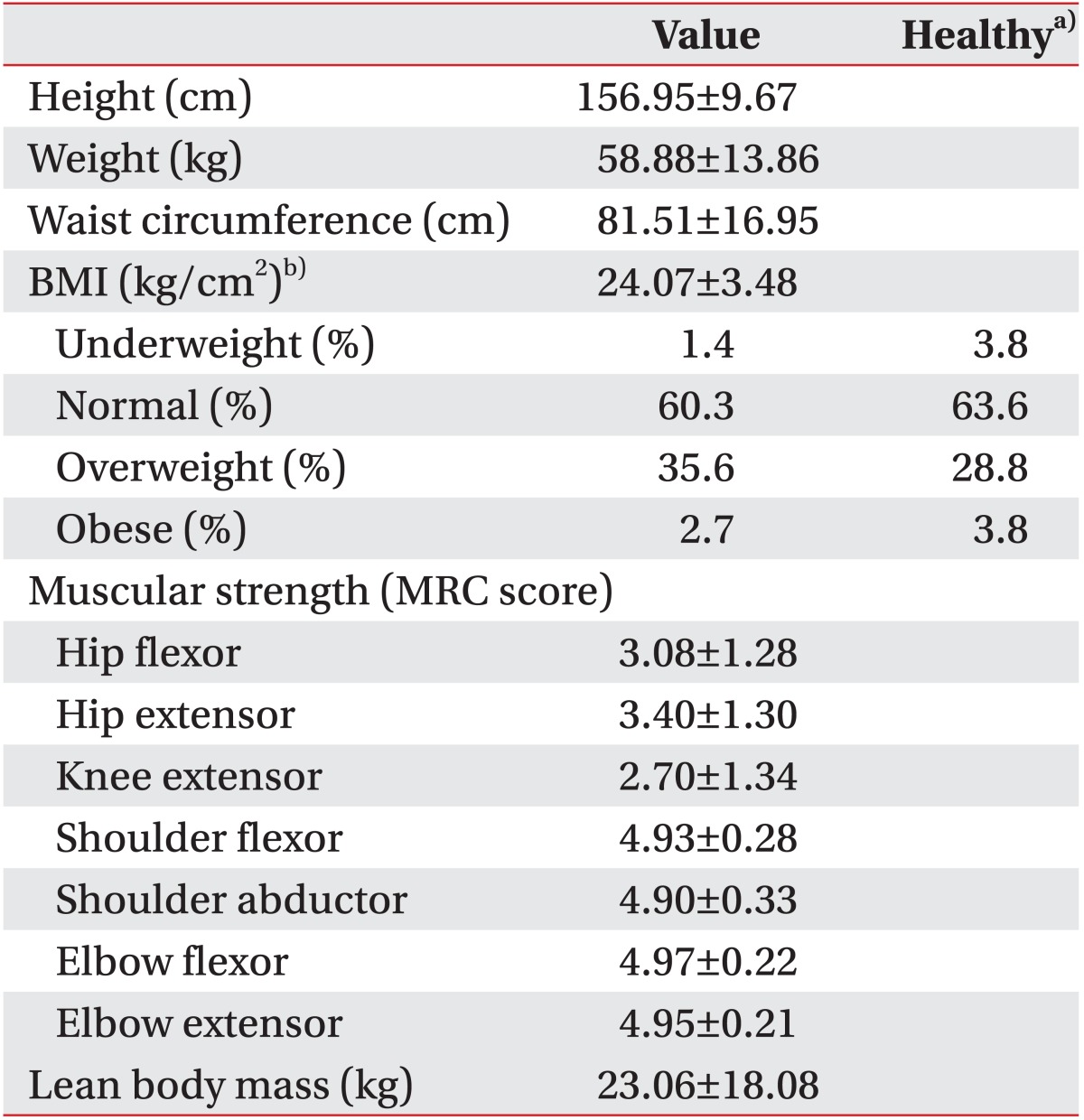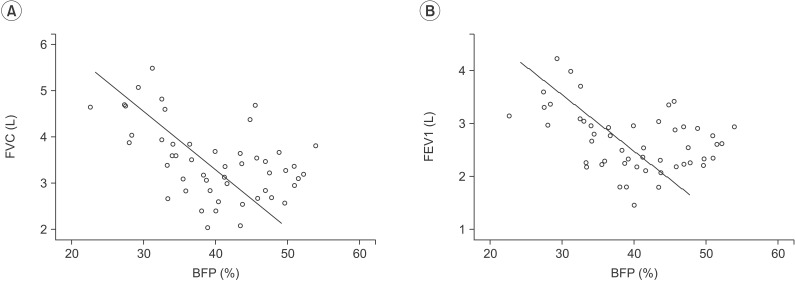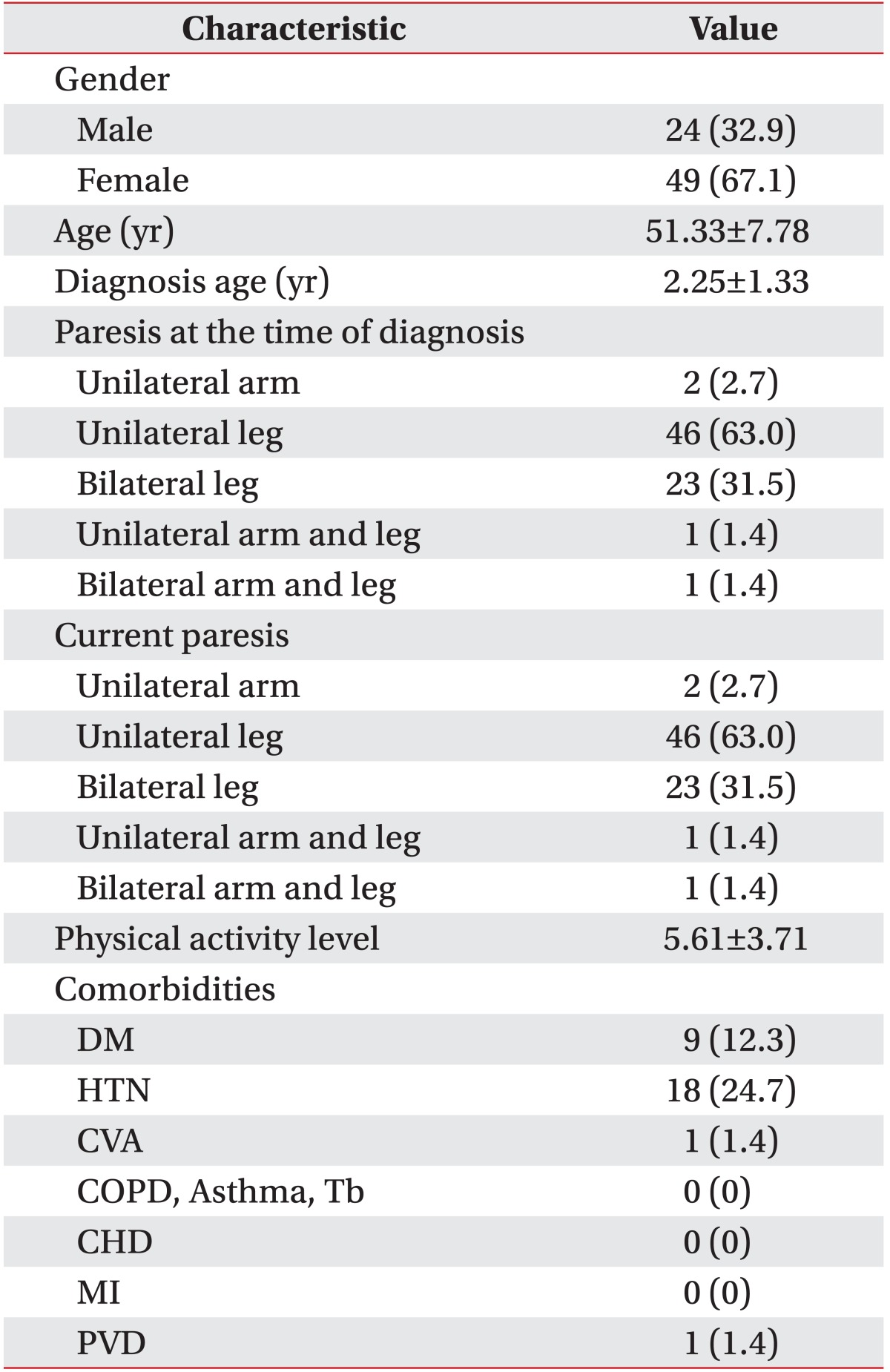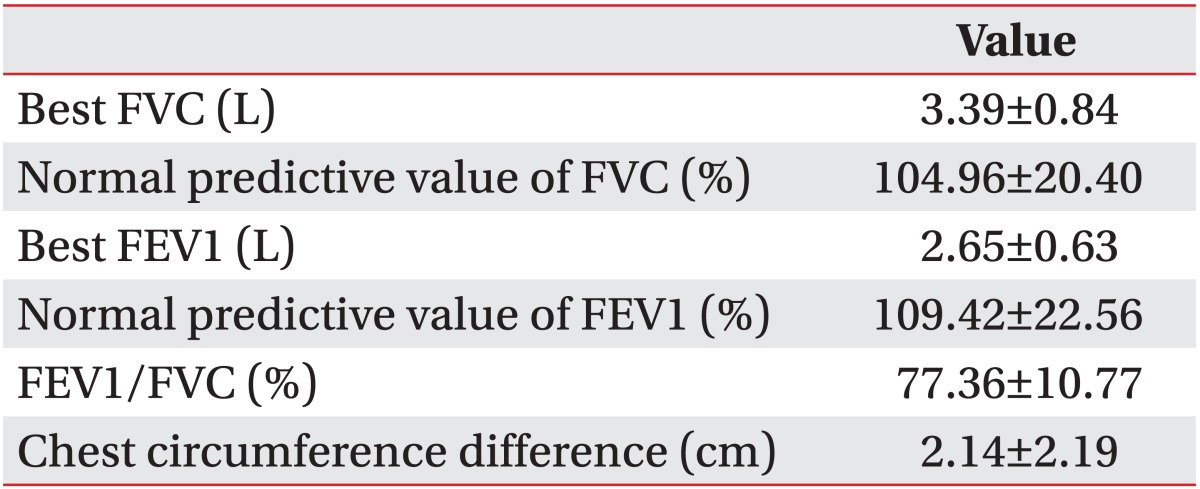1. Jubelt B. Post-Polio Syndrome. Curr Treat Options Neurol. 2004; 6:87–93. PMID:
14759341.

2. Kidd D, Howard RS, Williams AJ, Heatley FW, Panayiotopoulos CP, Spencer GT. Late functional deterioration following paralytic poliomyelitis. QJM. 1997; 90:189–196. PMID:
9093596.

3. Kling C, Persson A, Gardulf A. The ADL ability and use of technical aids in persons with late effects of polio. Am J Occup Ther. 2002; 56:457–461. PMID:
12125836.

4. Nollet F, Horemans H, Beelen A. A multicenter, randomized, double-blinded trial of pyridostigmine in postpolio syndrome. Neurology. 2000; 55:899–901. PMID:
10994028.

5. Stolwijk-Swuste JM, Beelen A, Lankhorst GJ, Nollet F. CARPA Study Group. The course of functional status and muscle strength in patients with late-onset sequelae of poliomyelitis: a systematic review. Arch Phys Med Rehabil. 2005; 86:1693–1701. PMID:
16084828.
6. Tjensvoll AB, Gilhus NE. The post-poliomyelitis syndrome: a real complication: a poliomyelitis material from the Haukeland hospital. Tidsskr Nor Laegeforen. 1997; 117:510–513. PMID:
9148448.
7. Trojan DA, Cashman NR. Post-poliomyelitis syndrome. Muscle Nerve. 2005; 31:6–19. PMID:
15599928.

8. Sue DY. Obesity and pulmonary function: more or less? Chest. 1997; 111:844–845. PMID:
9106556.
9. Stevenson FH, Wilson AB, Bottomley AH, Airey DM. Rehabilitation of respiratory function after poliomyelitis. J Bone Joint Surg Br. 1963; 45:326–336.

10. Howard RS, Wiles CM, Spencer GT. The late sequelae of poliomyelitis. Q J Med. 1988; 66:219–232. PMID:
3200962.
11. Chang KH, Lai CH, Chen SC, Hsiao WT, Liou TH, Lee CM. Body composition assessment in Taiwanese individuals with poliomyelitis. Arch Phys Med Rehabil. 2011; 92:1092–1097. PMID:
21704790.

12. Choi JK, Paek D, Lee JO. Normal predictive values of spirometry in Korean population. Tuberc Respir Dis. 2005; 58:230–242.

13. Swallow EB, Reyes D, Hopkinson NS, Man WD, Porcher R, Cetti EJ, et al. Quadriceps strength predicts mortality in patients with moderate to severe chronic obstructive pulmonary disease. Thorax. 2007; 62:115–120. PMID:
17090575.

14. Clark CJ, Cochrane LM, Mackay E, Paton B. Skeletal muscle strength and endurance in patients with mild COPD and the effects of weight training. Eur Respir J. 2000; 15:92–97. PMID:
10678627.

15. Couser JI Jr, Martinez FJ, Celli BR. Pulmonary rehabilitation that includes arm exercise reduces metabolic and ventilatory requirements for simple arm elevation. Chest. 1993; 103:37–41. PMID:
8417932.

16. Berry MJ, Rejeski WJ, Adair NE, Zaccaro D. Exercise rehabilitation and chronic obstructive pulmonary disease stage. Am J Respir Crit Care Med. 1999; 160:1248–1253. PMID:
10508815.

17. Beauchamp MK, Janaudis-Ferreira T, Goldstein RS, Brooks D. Optimal duration of pulmonary rehabilitation for individuals with chronic obstructive pulmonary disease - a systematic review. Chron Respir Dis. 2011; 8:129–140. PMID:
21596893.

18. Jubber AS. Respiratory complications of obesity. Int J Clin Pract. 2004; 58:573–580. PMID:
15311557.

19. Janssen I, Katzmarzyk PT, Ross R. Body mass index, waist circumference, and health risk: evidence in support of current National Institutes of Health guidelines. Arch Intern Med. 2002; 162:2074–2079. PMID:
12374515.
20. Pistelli F, Bottai M, Viegi G, Di Pede F, Carrozzi L, Baldacci S, et al. Smooth reference equations for slow vital capacity and flow-volume curve indexes. Am J Respir Crit Care Med. 2000; 161(3 Pt 1):899–905. PMID:
10712340.

21. Fabris De Souza SA, Faintuch J, Greve JW, Cecconello I. Role of body mass index in pulmonary function of morbidly obese subjects. Chest. 2007; 132(4 Suppl):613–614.

22. Sin DD, Jones RL, Man SF. Obesity is a risk factor for dyspnea but not for airflow obstruction. Arch Intern Med. 2002; 162:1477–1481. PMID:
12090884.

23. Mannino DM, Doherty DE, Sonia Buist A. Global Initiative on Obstructive Lung Disease (GOLD) classification of lung disease and mortality: findings from the Atherosclerosis Risk in Communities (ARIC) study. Respir Med. 2006; 100:115–122. PMID:
15893923.

24. Lin WY, Yao CA, Wang HC, Huang KC. Impaired lung function is associated with obesity and metabolic syndrome in adults. Obesity (Silver Spring). 2006; 14:1654–1661. PMID:
17030977.

25. Polio Australia Incorporated. The late effects of polio: introduction to clinical practice. Kew East: Polio Australia Incorporated;2012.
26. Choi KS, Han JH, Hwang SK, Kang BS. The effects of body fat rate on pulmonary function and oxygen uptake in adult obesity men. Korean J Sports Med. 1998; 16:71–79.
27. Ray RM, Senders CW. Airway management in the obese child. Pediatr Clin North Am. 2001; 48:1055–1063. PMID:
11494638.

28. Harik-Khan RI, Wise RA, Fleg JL. The effect of gender on the relationship between body fat distribution and lung function. J Clin Epidemiol. 2001; 54:399–406. PMID:
11297889.

29. Wise RA, Enright PL, Connett JE, Anthonisen NR, Kanner RE, Lindgren P, et al. Effect of weight gain on pulmonary function after smoking cessation in the Lung Health Study. Am J Respir Crit Care Med. 1998; 157(3 Pt 1):866–872. PMID:
9517604.

30. McDonnell WF, Seal E Jr. Relationships between lung function and physical characteristics in young adult black and white males and females. Eur Respir J. 1991; 4:279–289. PMID:
1864343.
31. Korea Health Industry Development Institute. Ministry of Health and Welfare. Report on 2011 Korea National Health and Nutrition Examination Survey. Seoul: Ministry of Health and Welfare;2012.
32. Dean E, Ross J, Road JD, Courtenay L, Madill KJ. Pulmonary function in individuals with a history of poliomyelitis. Chest. 1991; 100:118–123. PMID:
2060329.

33. Klefbeck B, Lagerstrand L, Mattsson E. Inspiratory muscle training in patients with prior polio who use part-time assisted ventilation. Arch Phys Med Rehabil. 2000; 81:1065–1071. PMID:
10943756.

34. Bottai M, Pistelli F, Di Pede F, Carrozzi L, Baldacci S, Matteelli G, et al. Longitudinal changes of body mass index, spirometry and diffusion in a general population. Eur Respir J. 2002; 20:665–673. PMID:
12358345.

35. Santana AN, Souza R, Martins AP, Macedo F, Rascovski A, Salge JM. The effect of massive weight loss on pulmonary function of morbid obese patients. Respir Med. 2006; 100:1100–1104. PMID:
16243500.

36. Leith DE, Bradley M. Ventilatory muscle strength and endurance training. J Appl Physiol. 1976; 41:508–516. PMID:
985393.









 PDF
PDF ePub
ePub Citation
Citation Print
Print




 XML Download
XML Download